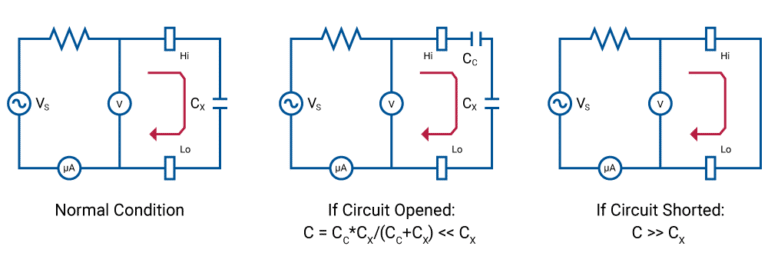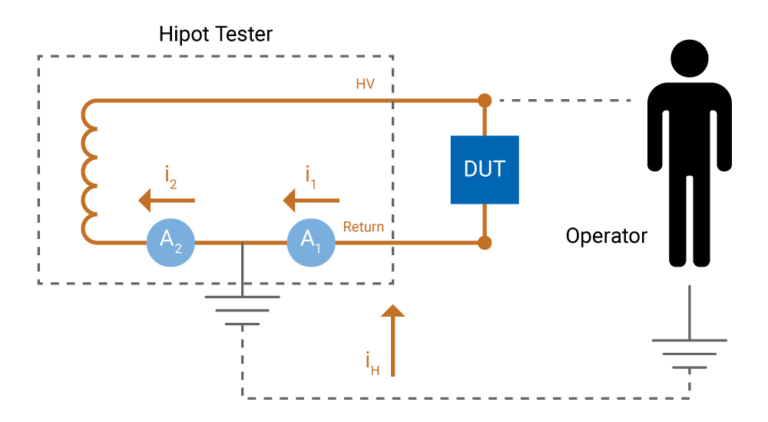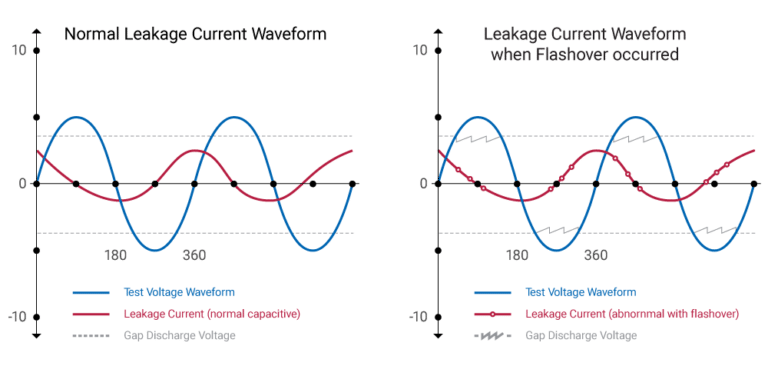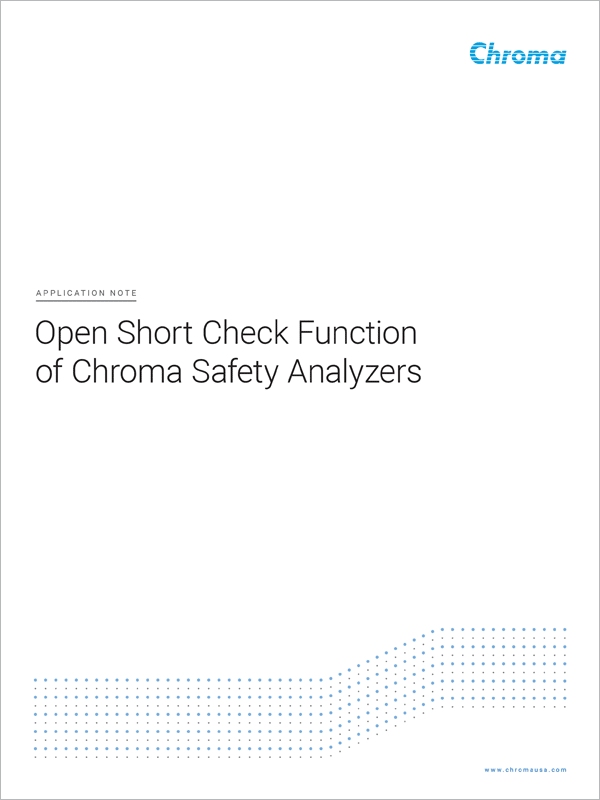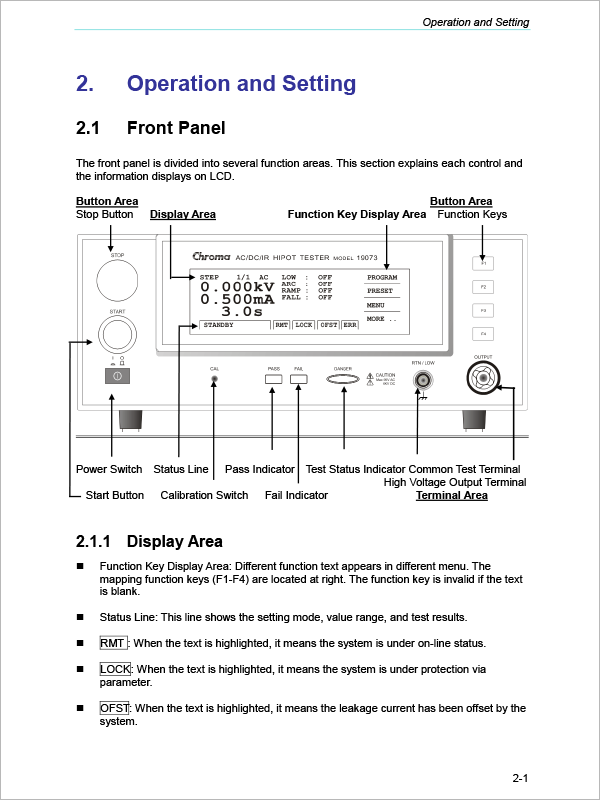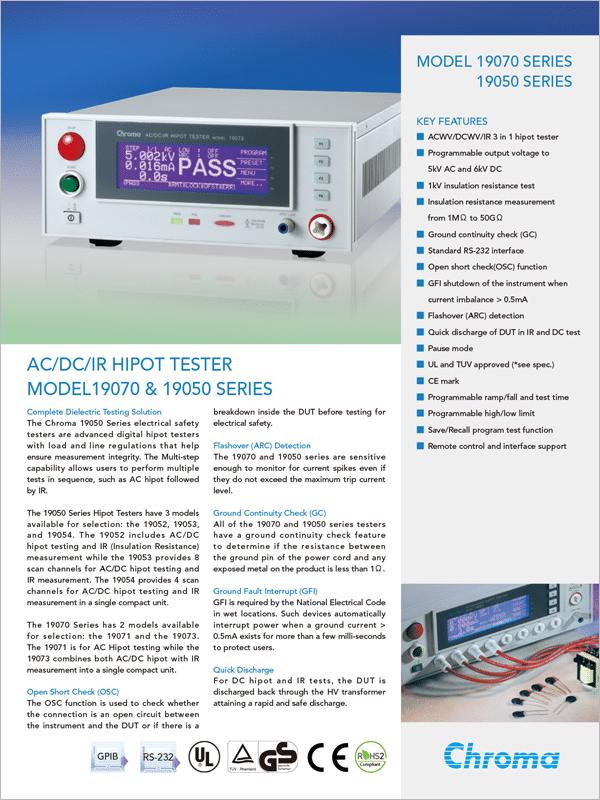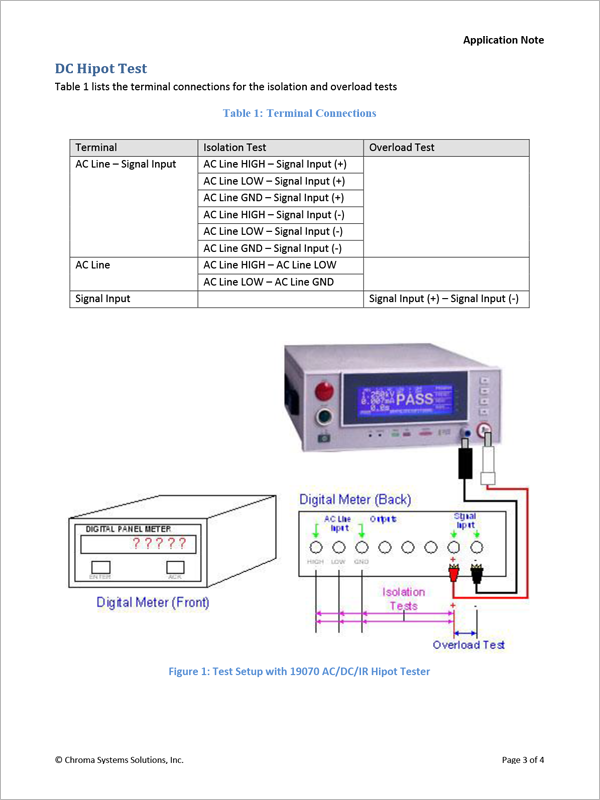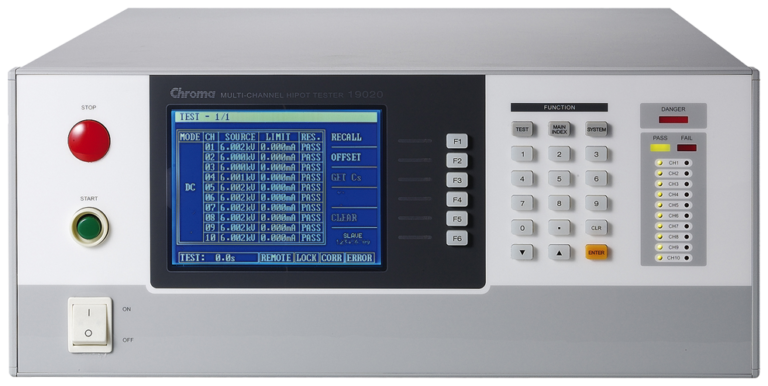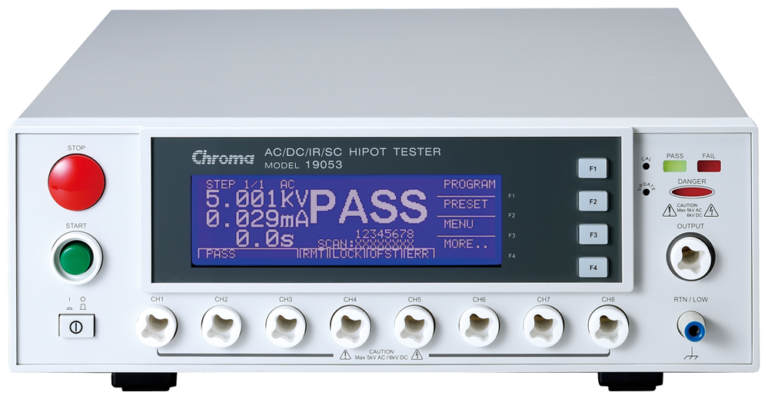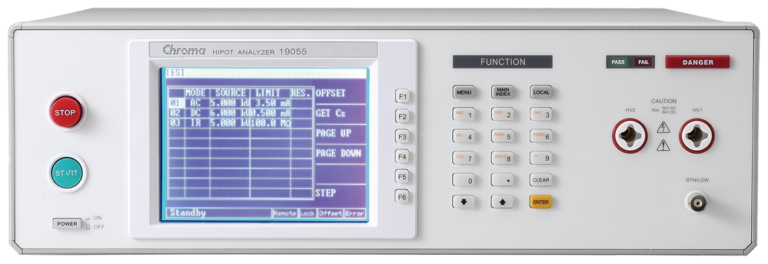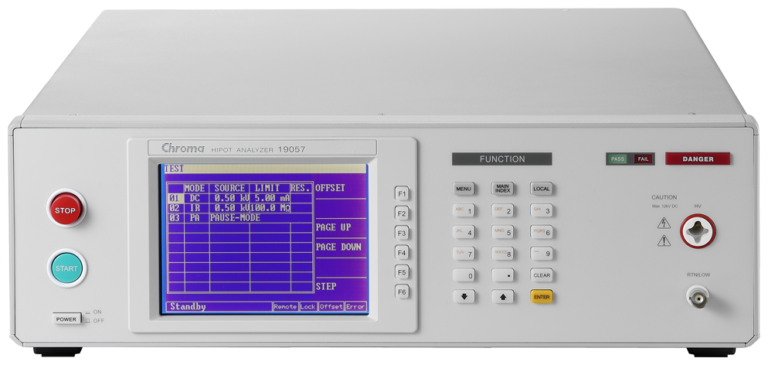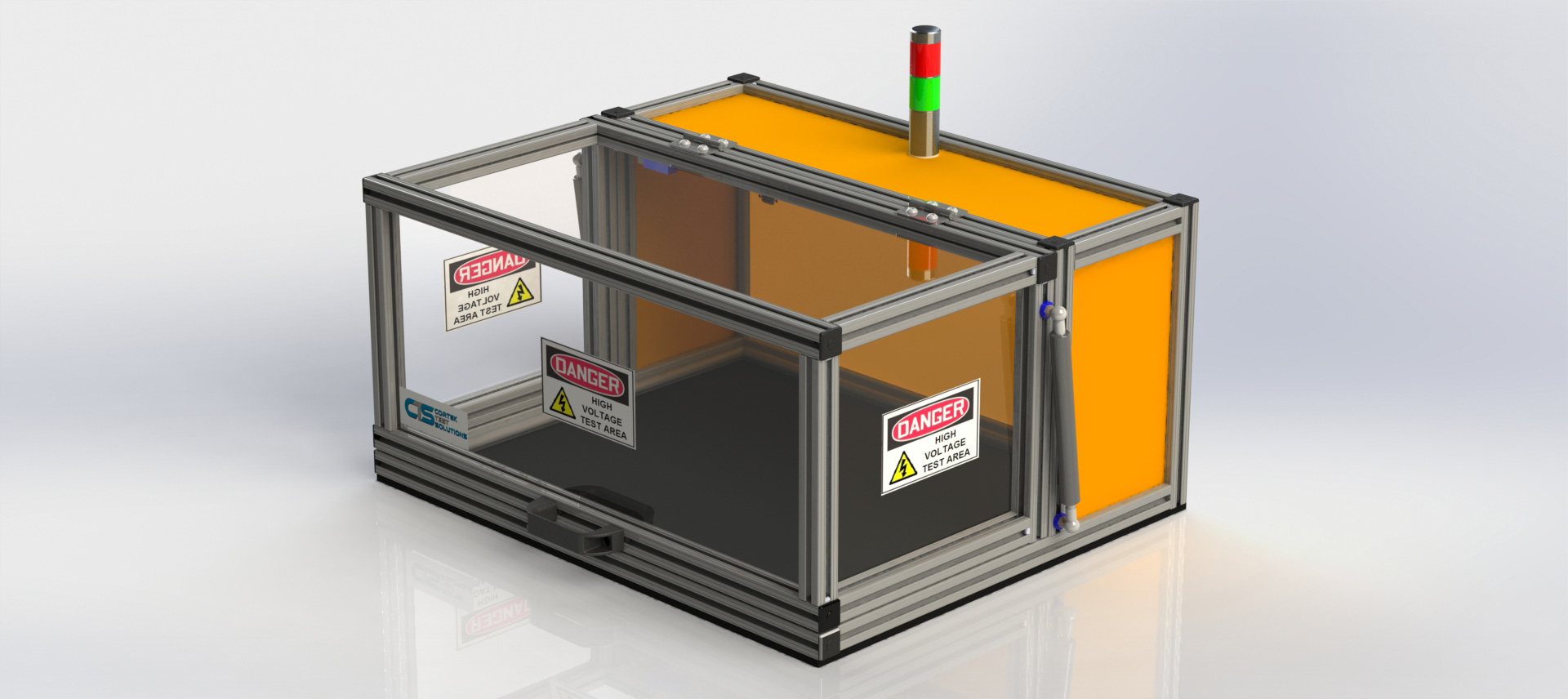Exploring Sentry Hipot Tester AC/DC/IR
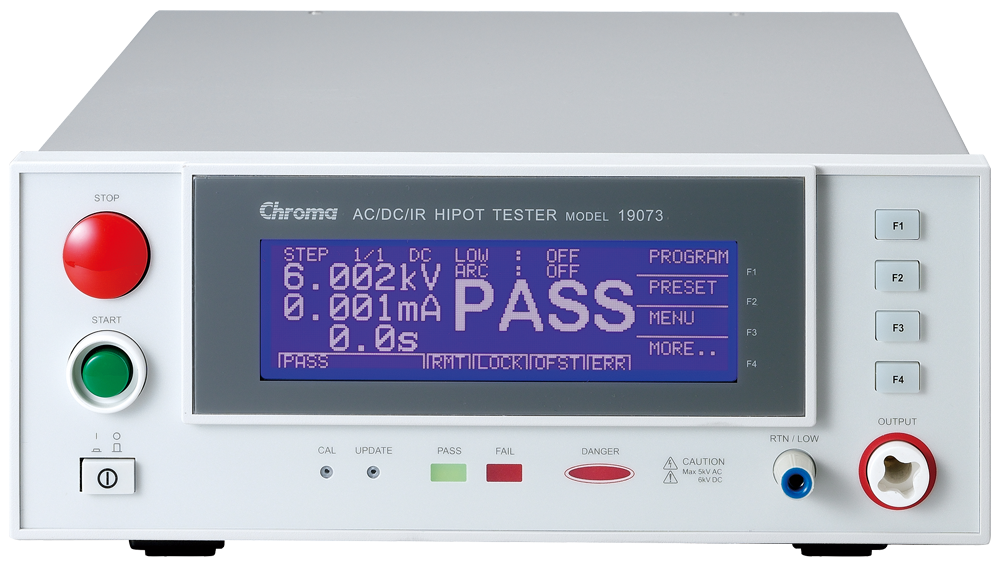
Sentry Hipot Tester AC/DC/IR
Chroma 19070
Compact, lightweight, and low-cost hipot tester for electronic components
Mode (Model Specific)
AC or AC / DC / IR
Channels
1
Output Capability
AC: 0.05~5kV
DC: 0.05~6kV
The Sentry 19070 Hipot Tester series provides 2 models to choose from. The Sentry 19071 for AC Hipot testing; and the Sentry 19073, which combines both AC and DC Hipot with insulation resistance (IR) measurements into a single compact unit.
Open Short Check (OSC)
The O.S.C function is used to check whether the connection is an open connection or that a short circuit exists between an instrument and DUT (equipment under test) before the Electrical Safety Test. If there is a bad connection between the instrument and DUT, for instance a bad lead or relay oxidation, the test will also PASS. In some cases, the DUT has a short before testing. In this case, testing can lead to a broken test instrument due to the high load current. Therefore, our test devices check for open and short circuit conditions to ensure effective testing and protect instruments.
Generally, DUT have capacitive load (Cx) from tens to thousands of pF. If there is an open connection, a capacitance will appear and total capacitive load will be lower than normal conditions. If the DUT is shorting, total capacitive load is higher than that in normal conditions. Therefore, we can measure the value of capacitive load to check whether the contact is good or not.
Ground Fault Interrupt (GFI)
Test environments often require that test equipment be equipped with an auto interrupt device. For this reason, Chroma provides a Ground Fault Interrupt (GFI) function. When the current meter A1 and A2 detect a difference (i2-i1=iH) between the value i1 and the actual i2 test current over high, the device can cut power transiently to protect human body safety. It is not only compliant with safety standards but also provides additional safeguards for test personnel.
Flashover (ARC) Detection
Fast transients in Voltage or Current occurring while Hi-Pot testing is called Electrical Flashover. Normally, in AC line frequency (50Hz/60Hz) or DC Hi-Pot testing, the leakage current is the same as 50Hz/60Hz or DC (charge current is excepted).
On the other hand, electrical discharge occurring because of poor insulation material, electrode gap or surface clearance etc., fast transients in leakage current appear as shown in Figure 2. This is a phenomenon of poor withstanding. Most Electrical Safety regulations mention the necessity of a Withstand Strength Test. Nevertheless, general Hi-Pot testers only detect the RMS value of leakage current without the capability to detect Flashover. Therefore, the FLASHOVER detection function included with our Hi-Pot tester is necessary.
More Features
Save/Recall
Program Test Function
Programmable
High/Low Limit
Remote Control and
Interface Support
Standard RS-232 Interface
A dielectric strength test, commonly called a hipot test, dielectric withstand, or high potential, is a stress test of the insulation of a device under test (DUT). With these choices, we can make it easy for you.
Models and Options
| Model | Description | Buy Online |
| Sentry 19071 | Hipot Tester (AC) | Buy Now |
| Sentry 19073 | Hipot Tester (AC/DC/IR) | Buy Now |
| Accessories | ||
| A190701 | Remote Test Box | Buy Now |
| A190702 | 40kV HV Test Probe | Buy Now |
| A190706 | 19″ Rack Mounting Kit | Buy Now |
| A190708 | ARC Verification Fixture | Buy Now |
| S15 | Interconnect Cable Set | Buy Now |
| G13 | Corded Product Adapter (115V) | Buy Now |
Watch
Webinar: Electrical Safety Testing 101
Get an overview of the basic principles of electrical safety testing.


